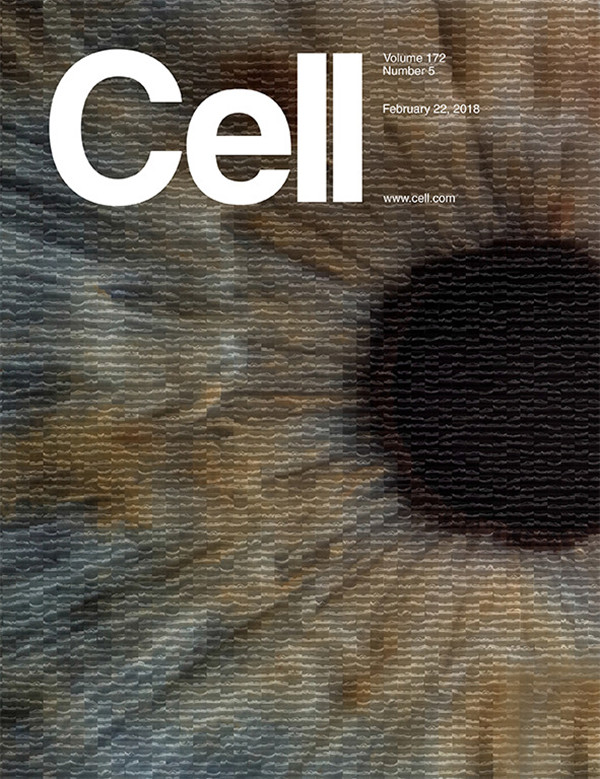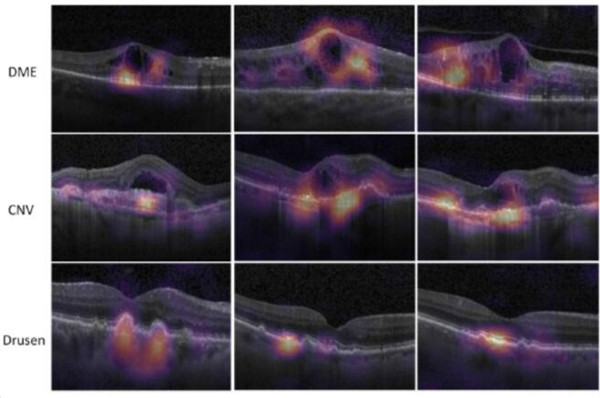Medical AI system highlighted in world-leading journal

Artificial intelligence (AI) has the potential to revolutionize disease diagnosis and management by performing classifications difficult for human experts and by rapidly reviewing immense numbers of images. And doctors from Guangzhou hospital have recently fully demonstrated this potential.
A special AI system developed by doctors from Guangzhou Women and Children's Medical Center enjoyed quite a moment in the spotlight after it was put on the cover of world-leading life sciences journal Cell on Feb 22.
The cover highlighted the doctors' article published in the journal "Identifying Medical Diagnoses and Treatable Diseases by Image-Based Deep Learning".

The cover of the peer-reviewed scientific journal Cell published on Feb 22 features the latest findings of Guangzhou-based eye doctors.[Photo/www.cell.com]
The AI system functions as a diagnostic tool and is based on a deep-learning framework for the screening of patients with common treatable blinding retinal diseases. The framework utilizes transfer learning, which trains a neural network using a fraction of the data of conventional approaches. Applying this approach to a dataset of optical coherence tomography images, the system can deliver performance comparable to that of human experts in classifying age-related macular degeneration and diabetic macular edema. Furthermore, the AI system can also be applied in the diagnosis of pediatric pneumonia by using chest X-ray images.
According to Zhang Kang, director of the Genetic Testing Center at Guangzhou Women and Children's Medical Center and professor of the Shiley Eye Institute at the University of California San Diego, who developed the AI system with his colleagues, the system is able to offer patients with eye disease with a diagnosis in as little as 30 seconds with an accuracy rate of 96.6 percent. Zhang added that his research team also arranged six eye specialists to compete with the AI system and only two won out against the system.

A photo of Zhang Kang, director of the Genetic Testing Center at Guangzhou Women and Children's Medical Center and professor of theShiley Eye Institute at University of California San Diego. [Photo/www.cnr.cn]
Liang Huiying, director of the Clinical Data Center of the Guangzhou Women and Children's Medical Center, said the AI system, when applied to distinguish bacterial and viral pneumonia in chest X-rays, can deliver results with an accuracy rate above 90 percent.
"The reason lies in the transfer learning techniques the system develops, which enables it to learn from a database and add that to what it has already learned."
Traditionally, results obtained by AI systems do not list their proofs and therefore doctors have been cautious in using the diagnosis. The new generation AI system by Zhang uses a different color to mark the diseased region, which tells the doctors the foundations of its judgments.

The special AI system uses a different color to mark the diseased part of the eye to provide better clinical-decision support. (DME and CNV are short acronyms for diabetic macular edema and choroidal neovascularization.) [Photo/www.cnr.cn]
Zhang said the AI technology, which has been already put into small-scale clinical use in eye clinics in the United States and Latin America, will be a high-impact application in biomedical imaging.
In the future, the AI system will integrate more data such as medical histories and laboratory examination data and provide better clinical-decision support.
MOST POPULAR
Editors' Picks
 Infographic:
Milestones in China's high-speed railway development
Infographic:
Milestones in China's high-speed railway development
 Infographic:
China's NEV industry performance review
Infographic:
China's NEV industry performance review
 Infographic:
China's low-altitude economy: A transformative force
Infographic:
China's low-altitude economy: A transformative force




